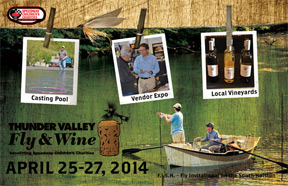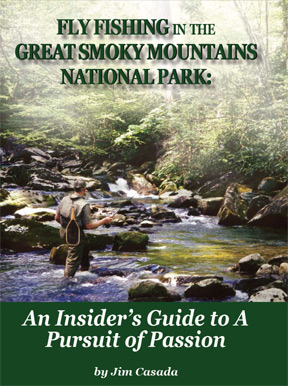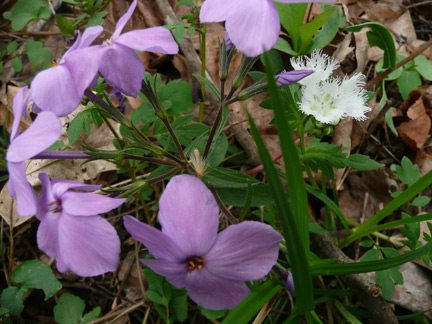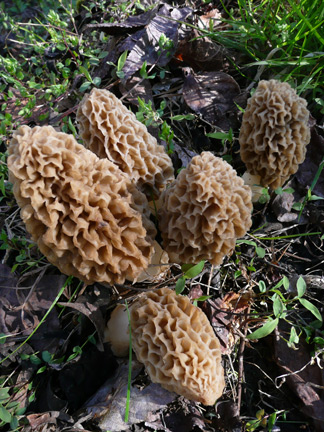April 2014 Newsletter
Click here to view this newsletter in a .pdf with a white background for easy printing.
A Time of Travail I Treasure If anyone has been paying attention, you know I’m a good many dollars, even more days and a newsletter short. I didn’t get around to getting the mid-month one for March written, and this one is shamefully late. For those who are turkey hunters, the explanation is simple. For those who aren’t, all I can do is beg a bit of forgiveness and assure you that those who share my hopeless addiction to His Majesty, the wild gobbler, understand. One of my favorite writers, Archibald Rutledge, summed matters up perfectly when he wrote: “Some men are mere hunters; others are turkey hunters.” For better or worse, I belong to the latter clan. That translates to the fact that I’m in the woods virtually every day from mid-March (scouting time) through the end of April. Our season here in South Carolina opens on April 1 and runs until May 1. I’ll run myself ragged hunting some property I own, a lease, and using the occasional day like this one when the weather is bad to play catch up. Right now it’s raining like all get out, but I’ll likely be back at it tomorrow. Throw in hunts in at least two other states, a class reunion (the 50th of my college graduating class) where I expect everyone but me to look old, a speaking engagement, and a mid-year board meeting of the Southeastern Outdoor Press Association, and you begin to get the picture. April is a month which flies by, leaves me worn and battered, and is a time of travail I truly treasure. I’m never sure whether I’m happier to see opening day of turkey season arrive or to finish up the last day of the season (or fill all my tags), but all in all it is a month of magic. I had a wonderful prelude to April late last month in my native Great Smokies of North Carolina. A first cousin whom I saw regularly when we were kids traveled to the high country with her husband, their two children, and the significant other of her son for a truly special day. Her mother, my Aunt Jessie (one of eight siblings of my father), was born in a little mountain homestead nestled high up on a small branch in what is now part of the Great Smoky Mountains National Park. Theirs was a hardscrabble way of life—subsistence farming, cutting some acid wood for “cash money,” and living the timeless mountain method of making do with what you’ve got. My father spent the most memorable years of his life on the little farm, and he always had a special corner of his heart reserved for the place and the experiences he enjoyed there during his boyhood. The family was poor—and I don’t think the description “dirt poor” would have been an overstatement. Yet somehow the children who lived to adulthood (two girls died early) made successful careers for themselves and carved out a meaningful place in the world. Aunt Jessie in many ways had one of the longest, toughest rows to hoe. She was the first member of the family to graduate from college (Maryville College in Tennessee), thanks to plenty of intelligence, a willingness to work hard, support from some of her siblings including my father and doing everything possible to scrape along. One of the things I learned from her daughter, Carolyn, was that both Aunt Jessie and her younger sister, Aunt Emma, who attended the same institution, earned part of their keep and tuition by working as seamstresses in a college shop. Aunt Jessie was a beautiful woman not only in a physical sense (a photo from her college years in a school annual dubs her a “Highland Lassie” and leaves no doubt about her loveliness, but in spirit as well. She married a few years after graduation, had a child, and then suffered tragedy when Carolyn was still a babe in arms. Her husband was killed in a commercial plane crash and with that her world crashed in around her. She and Carolyn would make a trek from Chicago to the mountains every summer, staying for two or three weeks, and there were other occasional visits as well. I always remember Aunt Jessie as being a bit sad but serene and ever so sweet. Those memories came flooding back when we bushwhacked up Juneywhank Branch on a rainy March day to a place my brother, Don, and I have been many times but was new to Carolyn and her family. Between the rain, slogging through the brush, and the bittersweetness of the moment, it was difficult to ascertain all the mixed emotions on display. That being said, when we sat, soaked, on a log and ate our hearty repast of peanut butter and jelly sandwiches, then offered multiple toasts using water from the spring which had served the homestead, I’m sure Carolyn felt a sense of fulfillment. Or, as she put it while looking at an early blooming bloodroot flower just above the spring, she felt a sense of completeness knowing that her mother and her memories of their many years together had come full circle. Historians such as yours truly often turn to the phrase “You can’t know where you are going if you don’t know where you’ve been.” With the visit to the old Casada home Carolyn realized, likely in a fuller, more meaningful fashion than ever before, just where she came from. We were already wet, and an absolute deluge made certain no dry stitch remained on anyone by the time we were back to our vehicles. However, warm showers, dry clothes, and a visit to the home where our grandparents lived in later years (both Aunt Jessie and my father, along with several of their siblings, helped purchase the home for them in what I consider a most admirable example of devotion to their parents). The folks who now own it were graciousness exemplified, and they seemed to take delight in each of us sharing particular memories of the place—where Carolyn slept each summer on their annual visits; the site where Grandpa rocked and told tales; the place where dozens of cousins, aunts, uncles, and even friends feasted at Christmas, and for me a spot which was almost as memorable in some ways as Daddy’s boyhood home was for him.
RECIPES This month’s recipes focus on wild turkey—in part because it is the season and also thanks to the fact that I have an abundance of this fine meat. We’ll start with some dishes featuring dark meat, something far too many hunters discard. Yes it can be chewy or tough, but that doesn’t mean that, properly prepared, it isn’t tasty. The ethical hunter eats what he kills, and a large gobbler has several pounds of dark meat and giblets in addition to the white meat of the breast. WILD TURKEY PATE
Dark meat (legs, thighs, back medallions, wings, neck) and giblets from
a wild turkey Cook the legs, thighs, medallions, wings and neck in a pot until well done and as close to tender as the dark meat of a wild turkey gets. Allow to cool and then remove meat from the bones, being especially careful with the long bony parts in the legs. Mince thoroughly in a food processor and set aside. Boil two eggs. Peel, chop finely and set aside. Chop the giblets into small pieces and sauté, using all butter (my preference) or a mixture of butter and olive oil, in a large frying pan with the chopped onion and garlic. When done, mix thoroughly with the dark meat, add salt and black pepper to taste (I like lots of black pepper) and press into a bowl or mold and chill until solid. Serve with toast wedges or crackers. WILD TURKEY AND NOODLES
Dark meat from a wild turkey Prepare the dark meat by cooking thoroughly in water. If you wish, you can set aside the water to use as stock when the cooking is completed. Allow to cool then strip meat from the bones of the neck, legs, thighs and wings. Chop coarsely on a cutting board and then place in stock on chicken broth. Thicken by additional cooking. In a separate pan, prepare pasta and, when cooked, toss with butter. Pour dark meat over the noodles and dig in for a hearty meal. WILD TURKEY SCALLOPINI WITH ASPARAGUS SAUCE
1 package Knorr béarnaise sauce mix Prepare béarnaise sauce according to package instructions. Cook leeks in microwave for about a minute. Chop half of asparagus and add to sauce along with leeks. Set aside. Pound turkey fillets or dark meat with a meat mallet. Melt butter in skillet and add olive oil. Lightly flour breast fillets and brown on each side until golden. Place meat in shallow greased 9 x 13 inch casserole dish. Spread asparagus sauce over each piece of meat. Sprinkle with Parmesan cheese, top with remaining asparagus and and brown lightly under the boiler. Serve at once. RANCH TURKEY STRIPS
1 teaspoon of a packet of Ranch Original Dry Salad Dressing mix Combine Ranch dressing mix with olive oil. Marinate turkey strips for 15 minutes. Grill for 10-12 minutes in frying pan, grilling pan, broiler on atop an outdoor grill. Serve immediately. Thank you for subscribing to the
Jim Casada Outdoors
newsletter. |
||||||
|
Send mail to
webmaster@jimcasadaoutdoors.com with
questions or comments about this Web site. |





